Hiring someone who turns out to be a poor fit isn’t just a hiccup. It can be a detour that affects your team’s time, energy, and momentum.
Brushing off a misaligned hire as a normal cost of doing business can create long-term challenges. A poor fit can ripple through your team’s productivity, morale, and even your company’s reputation.
Consider this: a CareerBuilder survey found that 75% of employers admit to hiring someone who wasn’t the right match. On average, that misalignment cost around $25,000. And replacing that employee may cost your company 50-60% of their annual salary, according to the Society for Human Resource Management.
More than 95% of 800 business leaders surveyed by Harvard Business Review say hiring and retaining talent is one of their top three priorities. And for good reason. Hiring someone who isn’t the right fit doesn’t just stall progress, it impacts culture, trust, and performance.
The good news is that misaligned hires aren’t inevitable. With an intentional, people-first approach, you can improve hiring outcomes and build a more engaged, resilient team.
Early Signs of a Poor Fit
A misaligned hire isn’t always obvious on day one, but signs tend to surface quickly. In the CareerBuilder survey, employers shared common patterns they noticed:
- Work quality didn’t meet expectations – 58%
- The individual struggled with team collaboration – 51%
- Skills didn’t match what was presented – 49%
- Attendance issues emerged early – 45%
Even after a settling-in period, additional indicators may arise:
- Inconsistent performance. KPIs and benchmarks are missed regularly.
- Persistent skill gaps. Promised capabilities don’t translate into daily work.
- Misaligned attitude. Difficulty adapting to company values or collaboration norms.
- Unreliability. Lateness, absenteeism, or avoidance of responsibility.
- Limited responsiveness to feedback. Coaching doesn’t lead to improvement.
- Client concerns. Recurring complaints in customer-facing interactions.
These signals don’t just affect output, they can undermine team cohesion, momentum, and trust. The sooner you identify misalignment; the sooner you can correct course and refocus.
The True Cost of a Misaligned Hire
When someone joins your team and turns out to be a misaligned hire, the impact can be far-reaching. It’s easy to think of it as a hiring hiccup, but the ripple effects touch almost every corner of your organization.
Start with the obvious: hiring someone takes real resources. The costs of recruiting, onboarding, and training—plus the salary you pay while ramping someone up—represent a major investment. When that person doesn’t stick, those dollars are gone. And the cycle starts again, often with equal or greater expense.
But the costs don’t end with numbers. When one team member isn’t performing or aligning with expectations, others have to pick up the slack. Mistakes need correcting. Deadlines stretch. Projects stall. That collective drag can sap momentum and slow progress in ways that are hard to measure but impossible to ignore. CareerBuilder research confirms it: more than a third of employers say that poor-fit hires slowed productivity across their teams.
And then there’s the cultural toll. One person’s misalignment can quietly affect morale. High-performing team members may grow frustrated or feel their efforts are undervalued. Even if no one says it aloud, the team feels the weight—and that weight can lead to disengagement or turnover. In fact, nearly a third of employers have seen morale suffer because of a single misaligned hire on the team.
Clients and customers may notice too. Whether a role is customer-facing or not, the ripple can reach your brand’s reputation. Missed deadlines, quality concerns, or inconsistent communication leave impressions that are hard to undo.
And finally, perhaps the greatest cost is time. The time spent coaching, correcting, or second-guessing is time not spent building up your strongest people or planning for what’s next. Every hour lost managing misalignment is an hour you don’t get back. That’s why hiring with intention matters more than ever.
How to Prevent Poor Fits
While no hiring process is foolproof, there are proven ways to reduce the risk of a poor match and reduce turnover through hiring smarter.
- Clarify the role. Write job descriptions that highlight not just tasks, but expectations, outcomes, and cultural context.
- Strengthen your process. Use behavioral interviews, skills assessments, and reference checks to ensure candidates align with the role.
- Use validated tools. Choose assessments that are designed to predict job success, not just personality.
- Prioritize fit. Look for alignment with company values, team dynamics, and communication style.
- Standardize evaluation. Use clear criteria to reduce bias and improve consistency.
- Listen to red flags. If concerns arise during the hiring journey, pause and reassess.
- Leverage hiring experts. Partnering with experienced recruiters can bring structure, clarity and insight to critical hiring decisions.
Choosing the Right Recruiting Partner
At Hire, we understand the cost of a misaligned hire isn’t just financial—it’s personal. That’s why we take a people-first, process-driven approach.
Here’s what to look for in a recruiting partner:
- Industry expertise. A specialized agency knows the demands of your roles and your industry’s pace.
- Thorough process. From sourcing to screening to skills validation, your partner should be methodical and rigorous.
- Scalability. Your staffing needs can change. Choose a partner that adapts with you.
- Clear communication. The best agencies feel like an extension of your HR team, not just a vendor.
The cost of a poor hire isn’t just a missed opportunity. It’s the trust, energy, and momentum your team loses along the way. But when you focus on alignment from day one—and surround yourself with the right partners, you can build a stronger, more resilient workforce.

